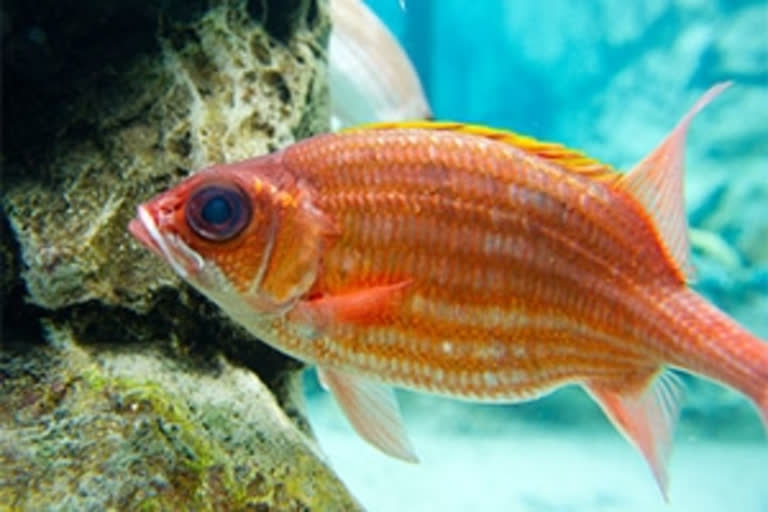Kochi: Scientists from India, Germany, United Kingdom and Switzerland have discovered a new family of bony fish from the Western Ghats and named it Aenigmachannidae.
Results of this study were published in ''Scientific Reports,'' the open-access mega-journal of the Nature Publishing Group.
A year after the discovery of the enigmatic Gollum Snakehead, Aenigmachanna gollum from the rice fields of northern Kerala, scientists have now conducted detailed studies on its skeleton and genetic assembly.
The study led to the recognition that this species, and its congener Aenigmachanna mahabali, represents a new family different from Channidae, in which both species were initially placed.
Rendered images obtained from high-resolution CT scans revealed that Aenigmachanna gollum has a surprisingly large number of primitive characters, and detailed molecular phylogenetic analyses including of its mitogenome, suggested an ancient separation from Channidae, the study said.
These suggest that members of Aenigmachannidae are "living fossils" and comprise an ancient Gondwanan lineage that survived the break-up of the supercontinent and the northward drift of the Indian subcontinent, about 100 million years ago, it added.
Also Read: Rare golden fish found in Visakhapatnam
The research team comprised scientists from Senckenberg Natural History Collections in Dresden (Germany), the Natural History Museum in London (UK), Natural History Museum in Berne (Switzerland), Indian Institute of Science Education and Research (IISER) - Pune (India), Nirmalagiri College in Kannur (India), and the Kerala University of Fisheries and Ocean Studies in Cochin (India).
Assistant Professor at the Kerala University of Fisheries and Ocean Studies, Rajeev Raghavan, who was part of the study, said the recognition of Aenigmachannidae as a new family of bony fishes comes six years after the description of Kryptoglanidae, another unique family of freshwater fish endemic to Kerala.
"The presence of two unique endemic families of freshwater fish in a small region like Kerala is unparalleled, and indicates the exceptional diversity and endemicity of fishes in this part of the world," said Raghavan.
The gollum snakehead, Aenigmachanna gollum and the mahabali snakehead, Aenigmachanna mahabali are known to occur in the aquifers and subterranean channels connected to paddy fields and dug-out wells in Malappuram and Pathanamthitta districts of Kerala.
While Aenigmachanna gollum was discovered by pure chance in a rice field not long after the devastating floods that raged in Kerala in August 2018, Aenigmachanna mahabali was discovered opportunistically from a dug-out well.
Also Read: Odisha introduces scheme to promote bio-floc fish farming technology
"The aquifers of Kerala have a wealth of enigmatic and relic fauna, the diversity of which we are only slowly uncovering. But subterranean ecosystems are under high levels of threat due to indiscriminate groundwater extraction and pollution, and introduction of alien species in the dugout wells. As a result, we may be losing unique habitats and species much before they are known to science" said Neelesh Dahanukar, Research Scientist at the IISER, Pune, who co-authored the paper.
According to scientists, the subterranean ecosystems of Kerala harbour some of the planet's most bizarre species such as Horaglanis krishnaii, Kryptoglanis shajii, Aenigmachanna gollum and Monopterus digressus. Many of these species are blind, pigment-less, and have peculiar morphological characters that are otherwise not seen in species occurring in surface waters.
Around 10 such enigmatic species of subterranean fish are currently known from Kerala, the scientists said.
"Throughout my career, I have worked on many strange fishes, but the Gollum Snakehead is easily the weirdest of them all. If I had been asked whether such a fish existed in the Western Ghats or anywhere in the world, I would have said, no way. Yet here it is," remarked Ralf Britz, based at the Senckenberg Museum at Dresden, Germany, who led this paper.
(PTI Report)



